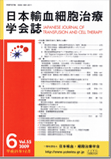Volume 56, Issue 6
Displaying 1-8 of 8 articles from this issue
- |<
- <
- 1
- >
- >|
Originals
-
2010Volume 56Issue 6 Pages 679-686
Published: 2010
Released on J-STAGE: January 13, 2011
Download PDF (665K) -
2010Volume 56Issue 6 Pages 687-691
Published: 2010
Released on J-STAGE: January 13, 2011
Download PDF (248K)
Reports
-
2010Volume 56Issue 6 Pages 692-696
Published: 2010
Released on J-STAGE: January 13, 2011
Download PDF (233K) -
2010Volume 56Issue 6 Pages 697-701
Published: 2010
Released on J-STAGE: January 13, 2011
Download PDF (542K) -
2010Volume 56Issue 6 Pages 702-708
Published: 2010
Released on J-STAGE: January 13, 2011
Download PDF (972K) -
2010Volume 56Issue 6 Pages 709-715
Published: 2010
Released on J-STAGE: January 13, 2011
Download PDF (432K)
Secondary Publication
-
2010Volume 56Issue 6 Pages 716-724
Published: 2010
Released on J-STAGE: January 13, 2011
Download PDF (893K)
Letter to the Editor
-
2010Volume 56Issue 6 Pages 725-726
Published: 2010
Released on J-STAGE: January 13, 2011
Download PDF (222K)
- |<
- <
- 1
- >
- >|
